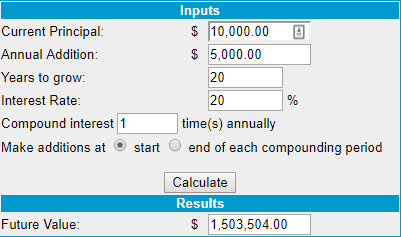
To calculate your dividend return, you will need to know both the current share prices and the dividend payment per share. You can then compare the results to the current price of the company. This metric may be helpful, but it can also be misleading. This article will provide guidance on how to calculate the correct dividend yield. Remember that the dividend yield does not necessarily equal the actual dividend payout. You must use it with caution to fully understand its meaning.
Dividend yield refers to a ratio that compares the company's dividend payout with its share price
If you're an investor, you've probably heard of dividend yield. This is a method of comparing the dividend payout of a company to its share price. However, it's not always as straightforward as it sounds. You must consider the company's operating characteristics, such as profitability and debt levels, before judging its dividend payout ratio.
The dividend yield, which is the ratio of a company's dividend payments to every dollar that it invests, is an important financial indicator. If the dividend yield decreases, it means that the company's dividend payments are getting smaller than they were before. It can also indicate the company is cutting back on its dividend payments and reducing its stock price. When combined with other metrics, like price and dividend yield, the latter is more useful. Dividend stocks can offer many benefits to investors, but they also have their drawbacks.

It helps investors compare stock prices
Dividend Yield ratio (or dividend yield ratio) is a simple tool to help you determine the relationship between a stock’s price and its dividend yield. This calculation can help you decide if a stock worth buying. Dividend yield can be calculated by multiplying the expected dividend income and the price per share. This is useful when comparing shares in the same industry. It is not the only method of evaluating stocks.
If you have an idea of how to calculate a stock's dividend yield, you can use the tool to analyze which stocks are a good buy. While most websites list dividend stocks with high yielding dividends, not all dividend stocks are the best. One example of falling stock is a company whose value was $100 just a few short months ago. When a company's business was suddenly under pressure, its shares fell to $50. In this situation, the dividend yield could double to 10%. You should know that rising dividends are a sign you're stressed and must be avoided.
It can be misleading
Many investors make poor decisions about how to calculate dividend yields. Many of these calculations are based on the price of a stock. In some cases, it is not a reliable indicator of a stock’s earnings capacity. Some investors find stocks that have high yields while still being profitable. AT&T is one example. This stock has been plagued by debt accumulated in multiple acquisitions that amounts to billions. In this case, AT&T is preparing to spin off its assets, which will change the structure of its cash flows and result in a massive cut in the company's dividend by 2022. In other cases, focusing on dividend yields can lead to poor investments in underperforming companies.
Dividend yields work best when they are used in conjunction to a stock's market price. It is important to look at the history of dividends when comparing companies. If a stock's last dividend was $20, but it was paid out $60 in the past year, that company will have a high dividend payout. If the share prices of stocks have fallen below $20, the company's yield is down by a shocking 45%.

It can be useful.
Dividend yield is a measure of how well a company distributes its dividends. It can also be used as a benchmark for other companies that pay the same amount. Dividends are payment from companies to shareholders. They are generally paid quarterly. Some companies choose to pay dividends monthly or annually, which could cause the yield to fluctuate unexpectedly. This metric is useful in determining whether a stock makes a good investment.
While dividend yield can serve as a useful indicator, it is not perfect. It can fluctuate drastically, especially if a company has a lower stock price due to fundamental factors. In that case, you might be holding an underperforming stock. This is known as the dividend yield trap. While dividend yield can be a useful metric to consider, it is important to look at historical trends as well as your financial goals. You can use an investment calculator to calculate your risk tolerance and customize your investment strategy to meet your goals.
FAQ
How do I invest in the stock market?
You can buy or sell securities through brokers. A broker buys or sells securities for you. When you trade securities, brokerage commissions are paid.
Banks are more likely to charge brokers higher fees than brokers. Banks offer better rates than brokers because they don’t make any money from selling securities.
An account must be opened with a broker or bank if you plan to invest in stock.
If you use a broker, he will tell you how much it costs to buy or sell securities. He will calculate this fee based on the size of each transaction.
Ask your broker:
-
The minimum amount you need to deposit in order to trade
-
whether there are additional charges if you close your position before expiration
-
What happens to you if more than $5,000 is lost in one day
-
How long can you hold positions while not paying taxes?
-
What you can borrow from your portfolio
-
Transfer funds between accounts
-
How long it takes to settle transactions
-
How to sell or purchase securities the most effectively
-
How to Avoid Fraud
-
How to get help when you need it
-
If you are able to stop trading at any moment
-
What trades must you report to the government
-
How often you will need to file reports at the SEC
-
Whether you need to keep records of transactions
-
What requirements are there to register with SEC
-
What is registration?
-
What does it mean for me?
-
Who is required to be registered
-
When should I register?
How do I choose an investment company that is good?
You want one that has competitive fees, good management, and a broad portfolio. The type of security in your account will determine the fees. Some companies have no charges for holding cash. Others charge a flat fee each year, regardless how much you deposit. Others charge a percentage on your total assets.
Also, find out about their past performance records. Poor track records may mean that a company is not suitable for you. Avoid companies that have low net asset valuation (NAV) or high volatility NAVs.
It is also important to examine their investment philosophy. In order to get higher returns, an investment company must be willing to take more risks. They may not be able meet your expectations if they refuse to take risks.
What is a bond?
A bond agreement between two parties where money changes hands for goods and services. It is also known simply as a contract.
A bond is typically written on paper, signed by both parties. This document contains information such as date, amount owed and interest rate.
The bond is used when risks are involved, such as if a business fails or someone breaks a promise.
Bonds are often used together with other types of loans, such as mortgages. This means the borrower must repay the loan as well as any interest.
Bonds can also help raise money for major projects, such as the construction of roads and bridges or hospitals.
The bond matures and becomes due. This means that the bond owner gets the principal amount plus any interest.
If a bond does not get paid back, then the lender loses its money.
What are some advantages of owning stocks?
Stocks are less volatile than bonds. The value of shares that are bankrupted will plummet dramatically.
If a company grows, the share price will go up.
To raise capital, companies often issue new shares. This allows investors buy more shares.
Companies borrow money using debt finance. This gives them cheap credit and allows them grow faster.
If a company makes a great product, people will buy it. The stock price rises as the demand for it increases.
The stock price will continue to rise as long that the company continues to make products that people like.
What is security in the stock exchange?
Security is an asset which generates income for its owners. Most security comes in the form of shares in companies.
A company may issue different types of securities such as bonds, preferred stocks, and common stocks.
The earnings per shared (EPS) as well dividends paid determine the value of the share.
A share is a piece of the business that you own and you have a claim to future profits. If the company pays a payout, you get money from them.
Your shares may be sold at anytime.
Statistics
- Ratchet down that 10% if you don't yet have a healthy emergency fund and 10% to 15% of your income funneled into a retirement savings account. (nerdwallet.com)
- "If all of your money's in one stock, you could potentially lose 50% of it overnight," Moore says. (nerdwallet.com)
- Our focus on Main Street investors reflects the fact that American households own $38 trillion worth of equities, more than 59 percent of the U.S. equity market either directly or indirectly through mutual funds, retirement accounts, and other investments. (sec.gov)
- US resident who opens a new IBKR Pro individual or joint account receives a 0.25% rate reduction on margin loans. (nerdwallet.com)
External Links
How To
How can I invest into bonds?
An investment fund, also known as a bond, is required to be purchased. You will be paid back at regular intervals despite low interest rates. This way, you make money from them over time.
There are many options for investing in bonds.
-
Directly purchasing individual bonds
-
Purchase of shares in a bond investment
-
Investing with a broker or bank
-
Investing through an institution of finance
-
Investing via a pension plan
-
Invest directly with a stockbroker
-
Investing with a mutual funds
-
Investing through a unit trust.
-
Investing with a life insurance policy
-
Investing through a private equity fund.
-
Investing using an index-linked funds
-
Investing through a hedge fund.